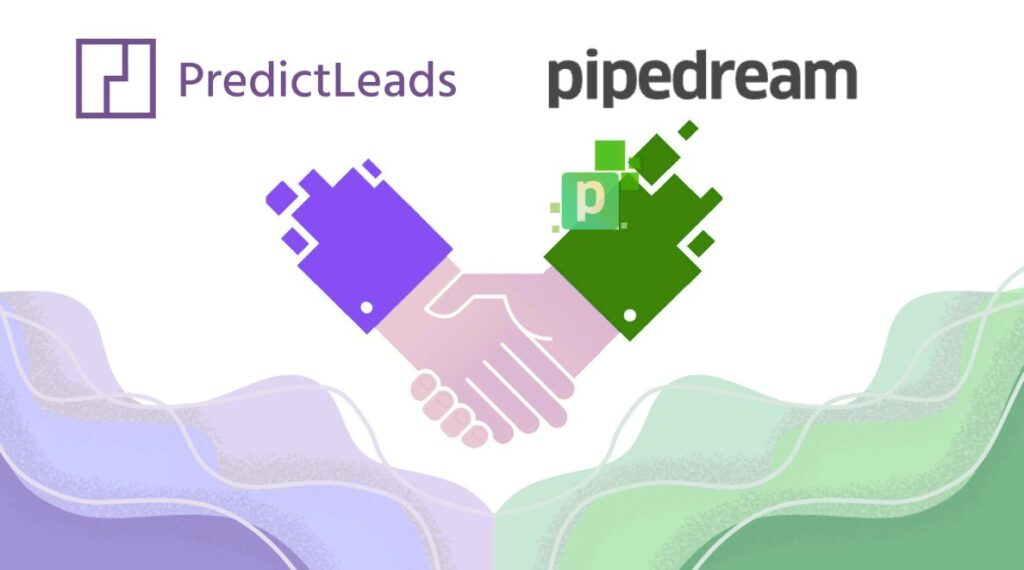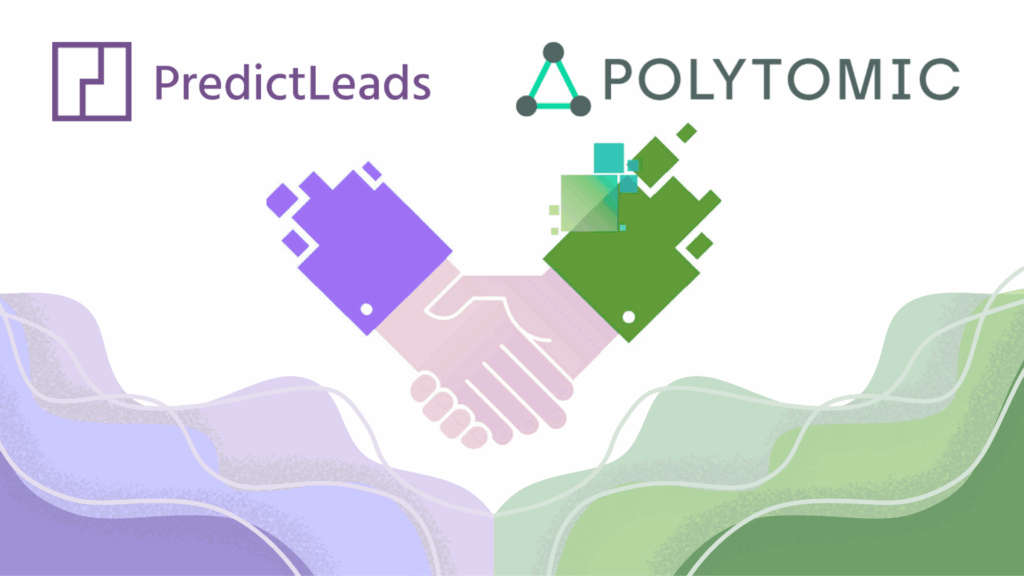Build no-code workflows with Make and turn company data into action
PredictLeads is now officially available on Make as a verified, vendor-maintained app, allowing you to connect PredictLeads with thousands of tools and automate GTM, sales, and research workflows & all this without writing code. This PredictLeads Make integration simplifies processes and enhances productivity.
If you already use PredictLeads data, this is the fastest way to operationalize it.
If you don’t, this is the easiest way to start.

Build, trigger, enrich, and route company intelligence anywhere.
Why this matters
PredictLeads has always been a data provider, not a platform.
Our focus is delivering high-quality company data via APIs — and letting you decide how to use it.
With Make, you can now:
- Pull PredictLeads data into your existing tools
- Automate workflows across sales, marketing, ops, and research
- Skip custom engineering and ship workflows in hours, not weeks
No UI lock-in. No rigid workflows. Just data, activated where you already work.
Official PredictLeads app on Make
The PredictLeads app on Make is:
- Verified by Make
- Developed and maintained by PredictLeads
- Production-ready for real customer workflows
You can get started for free:
- No credit card required
- No time limit on the Free plan
What you can build with PredictLeads on Make
Make works with triggers, searches, and actions.
Company intelligence
- Get a Company
- Search Companies (by location, size)
- Search Similar Companies
- Search Company Connections
- Search Company Website Evolution
Hiring & jobs
- Get a Job Opening
- Search Job Openings (by role, O*NET codes, location)
- Search Company Job Openings
News & signals
- Get a News Event
- Search Company News Events
- Search Latest Posts
Technologies & products
- Get a Technology
- Search Company Technologies
- Search tracked Technologies
- Get a Product
- Search Company Products
Financing & portfolio data
- Search Company Financing Events
- Search Portfolio Companies
Developer & advanced usage
- List API subscription information
- Make an API Call (full flexibility for advanced workflows)
Connect PredictLeads with your favorite tools
Once connected, you can plug PredictLeads into tools like:
- Google Sheets
- HubSpot CRM
- Notion
- Airtable
- Slack
- Gmail / Outlook
- ClickUp
- OpenAI (ChatGPT, Whisper, DALL-E)
- Google Docs & Drive
- Telegram
- Stripe
- Shopify
- WordPress
- And thousands more via Make
This makes PredictLeads a central data layer across your GTM stack.
Example workflows teams are building
Here are a few common patterns we’re seeing:
- Sales
Identify companies hiring for a specific role → enrich in HubSpot → notify SDRs in Slack - Marketing
Track companies launching new products → log events in Notion → trigger content ideas - RevOps / Data teams
Monitor technology adoption → push updates to Sheets or BI tools - Investors & research teams
Track portfolio companies → alert on news, hiring, or tech changes
All without custom scripts.
Why Make (and not another platform)
We see Make as a natural fit because:
- It’s visual and no-code
- It scales from simple workflows to complex orchestration
- It plays well with APIs and external data sources
- It doesn’t force PredictLeads into a “platform UI” model
You stay in control of your workflows.
Get started
You can start building immediately:
- Connect PredictLeads on Make
- Authenticate with your API key
- Choose a module and start building
No credit card. No time pressure.
If you want help designing your first workflow, or want examples tailored to your use case (sales, VC, GTM, ops), reach out — we’re happy to help.
PredictLeads is a B2B data provider that tracks millions of companies globally, delivering structured signals like hiring, technologies, news, and growth indicators via APIs and datasets—so teams can power sales, marketing, and investment workflows with real company intelligence.




